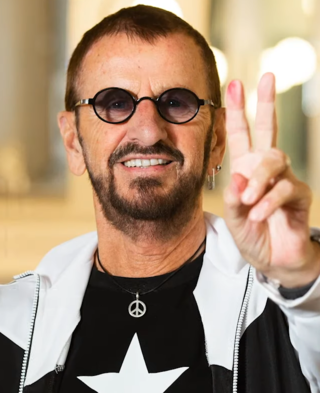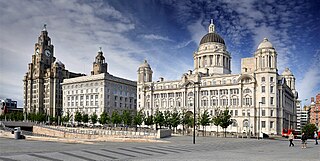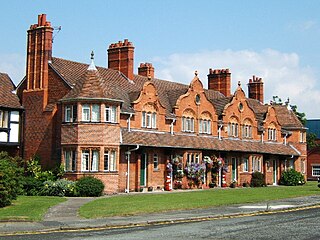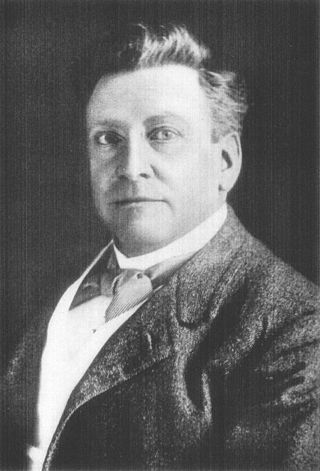
Hulme Hall in Port Sunlight, on the Wirral Peninsula in Merseyside, England, is a Grade II listed building, first registered as such in 1965.

Hulme Hall in Port Sunlight, on the Wirral Peninsula in Merseyside, England, is a Grade II listed building, first registered as such in 1965.
The building was designed by William Owen and his son, Segar. [1] Built in 1901 as a women's dining hall, it became an art gallery from 1911, housing some of the collection of William Lever, 1st Viscount Leverhulme, prior to its removal to the Lady Lever Art Gallery around 1922. [2] [3] During World War I, the artworks were packed away and the building housed refugees from Belgium. [4]
The Beatles gave four performances at Hulme Hall, the first on 7 July 1962. [5] On 18 August 1962, Hulme Hall served as the venue for Ringo Starr's first official performance as a Beatle following the sacking of Pete Best; [6] the band's first performance as the Fab Four. [7] Other shows followed on 6 and 27 October 1962. [8] [9]
It has been used as a community centre [10] and, as of 2015 [update] , it is used as a conference, banqueting and wedding centre. [11]

Sir Richard Starkey, known professionally as Ringo Starr, is an English musician, songwriter and actor who achieved international fame as the drummer for the Beatles. Starr occasionally sang lead vocals with the group, usually for one song on each album, including "Yellow Submarine" and "With a Little Help from My Friends". He also wrote and sang the Beatles songs "Don't Pass Me By" and "Octopus's Garden", and is credited as a co-writer of four others.

Tate Liverpool is an art gallery and museum in Liverpool, Merseyside, England, and part of Tate, along with Tate St Ives, Cornwall, Tate Britain, London, and Tate Modern, London. The museum was an initiative of the Merseyside Development Corporation. Tate Liverpool was created to display work from the Tate Collection which comprises the national collection of British art from the year 1500 to the present day, and international modern art. The gallery also has a programme of temporary exhibitions. Until 2003, Tate Liverpool was the largest gallery of modern and contemporary art in the UK outside London.

Merseyside is a ceremonial and metropolitan county in North West England. It borders Lancashire to the north, Greater Manchester to the east, Cheshire to the south, the Welsh county of Flintshire across the Dee Estuary to the southwest, and the Irish Sea to the west. The largest settlement is the city of Liverpool.

The Lady Lever Art Gallery is a museum founded and built by the industrialist and philanthropist William Lever, 1st Viscount Leverhulme and opened in 1922. The Lady Lever Art Gallery is set in the garden village of Port Sunlight, on the Wirral and one of the National Museums Liverpool.

Port Sunlight is a model village in the Metropolitan Borough of Wirral, Merseyside, England. It is located between Lower Bebington and New Ferry, on the Wirral Peninsula. Port Sunlight was built by Lever Brothers to accommodate workers in its soap factory ; work commenced in 1888. The name is derived from Lever Brothers' most popular brand of cleaning agent, Sunlight.

Built in 1716–17 as a charity school, Bluecoat Chambers in School Lane is the oldest surviving building in central Liverpool, England. Following the Liverpool Blue Coat School's move to another site in 1906, the building was rented from 1907 onwards by the Sandon Studios Society. Based on the presence of this art society and the subsequent formation of the Bluecoat Society of Arts in 1927, the successor organisation laid claim to being the oldest arts centre in Great Britain, now called the Bluecoat.

William Hesketh Lever, 1st Viscount Leverhulme, was an English industrialist, philanthropist, and politician. Having been educated at a small private school until the age of nine, then at church schools until he was fifteen; a somewhat privileged education for that time, he started work at his father's wholesale grocery business in Bolton. Following an apprenticeship and a series of appointments in the family business, which he successfully expanded, he began manufacturing Sunlight Soap, building a substantial business empire with many well-known brands such as Lux and Lifebuoy. In 1886, together with his brother, James, he established Lever Brothers, which was one of the first companies to manufacture soap from vegetable oils, and which is now part of the British multinational Unilever. In politics, Lever briefly sat as a Liberal MP for Wirral and later, as Lord Leverhulme, in the House of Lords as a Peer. He was an advocate for expansion of the British Empire, particularly in Africa and Asia, which supplied palm oil, a key ingredient in Lever's product line. His firm had become associated with activities in the Belgian Congo by 1911.
National Museums Liverpool, formerly National Museums and Galleries on Merseyside, comprises several museums and art galleries in and around Liverpool in Merseyside, England. All the museums and galleries in the group have free admission. The museum is a non-departmental public body sponsored by the Department for Culture, Media and Sport (DCMS) and an exempt charity under English law.

"Ask Me Why" is a song by the English rock band the Beatles originally released in the United Kingdom as the B-side of their single "Please Please Me". It was also included on their 1963 debut album Please Please Me. It was written primarily by John Lennon and credited to the Lennon–McCartney partnership.

Maureen Starkey Tigrett, also known as Mo Starkey, was a hairdresser from Liverpool, England, best known as the first wife of Ringo Starr, the Beatles' drummer. When she was a trainee hairdresser in Liverpool, she met him at the Cavern Club, where the Beatles were playing. Starr proposed marriage at the Ad Lib Club in London on 20 January 1965. They married at the Caxton Hall Register Office, London, in 1965, and divorced in 1975.

10 Admiral Grove, a property in Toxteth, Liverpool, England, is the house in which Ringo Starr lived for twenty years before he rose to fame with the Beatles.
The Beatles were a rock group from Liverpool, England. This timeline chronicles their activities.

Sponsa de Libano is a painting by the Pre-Raphaelite artist Edward Burne-Jones dated 1891.
This is a summary of 1962 in music in the United Kingdom, including the official charts from that year.

The Leverhulme Memorial stands to the west of the Lady Lever Art Gallery on the junction of Windy Bank and Queen Mary's Drive, Port Sunlight, Wirral, Merseyside, England. It commemorates the life of William Lever, 1st Viscount Leverhulme, the businessman who created the factory and model village of Port Sunlight. The memorial was designed by James Lomax-Simpson, and the sculptor was William Reid Dick. It consists of an obelisk with a figure on the top, with a separate group of four figures beside it. The memorial was unveiled in 1930. It is recorded in the National Heritage List for England as a designated Grade II listed building.

The Port Sunlight War Memorial stands in a central position in the model village of Port Sunlight, Wirral, Merseyside, England. The founder of the village and employer of its residents, William Lever, was anxious to have a memorial to commemorate those of his workers who had been lost in the First World War. As early as 1916 he commissioned Goscombe John to design a war memorial, which was completed and unveiled in 1921 by two of his employees. It consists of a granite runic cross with bronze statues and reliefs and has the theme "Defence of the Realm". On the memorial are the names of all of the company's employees who died as a result of both World Wars. It is recorded in the National Heritage List for England as a designated Grade I listed building.

William Owen was an English architect who practised in Warrington, which was at that time in Lancashire, England. His works were confined to Northwest England. Owen is best known for his collaboration with William Lever in the creation of the soap-making factory and associated model village at Port Sunlight in the Wirral Peninsula. Here he designed the factory, many of the workers' houses, public buildings and the church. Later Owen was joined by his son, Segar, as a partner. On his own, or in partnership, Owen designed houses, churches, banks, public houses, an infirmary, a school, and a concert hall.
Port Sunlight is a model village in Wirral, Merseyside, England. It contains 195 buildings that are recorded in the National Heritage List for England as designated listed buildings. Of these, one is listed at Grade I, the highest of the three grades, and the others are at Grade II, the lowest grade. There are no buildings listed at Grade II*.